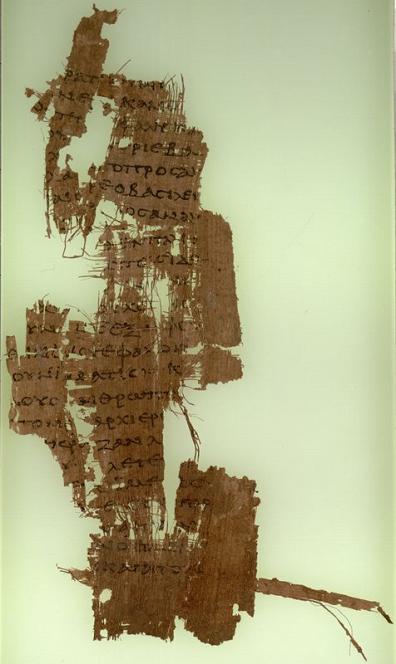| Change to Book/Chapter View |
|
|
|
Translation process is ongoing. For current status see details |
|
|

Papyrus 90 Discovered: Probably Oxyrhynchus, Egypt Location: Oxford, England; Ashmolean Museum Contents: John 18:36 – 19:7
John 18 36 Jesus answered, “My Kingdom is not of this world. If my Kingdom were of this world, then my servants would fight, that I wouldn’t be delivered to the Jews. But now my Kingdom is not from here.” 37 Pilate therefore said to him, “Are you a king then?” Jesus answered, “You say that I am a king. For this reason I have been born, and for this reason I have come into the world, that I should testify to the truth. Everyone who is of the truth listens to my voice.” 38 Pilate said to him, “What is truth?” When he had said this, he went out again to the Jews, and said to them, “I find no basis for a charge against him. 39 But you have a custom, that I should release someone to you at the Passover. Therefore, do you want me to release to you the King of the Jews?” 40 Then they all shouted again, saying, “Not this man, but Barabbas!” Now Barabbas was a robber.
John 19 So Pilate then took Jesus, and flogged him.2 The soldiers twisted thorns into a crown, and put it on his head, and dressed him in a purple garment. 3 And facing him they kept saying, “Hail, King of the Jews!” and they kept slapping him. 4 Then Pilate went out again, and said to them, “Behold, I bring him out to you, that you may know that I find no basis for a charge against him.” 5 Jesus
therefore came out, wearing
the crown of thorns and the purple garment. 6 When
therefore the chief priests
and the officers saw him,
they shouted, saying,
“Crucify him! Pilate said to them, “Take him yourselves, and crucify him, for I find no basis for a charge against him.” 7 The Jews answered him, “We have a law, and by our law he ought to die, because he made himself the Son of God.”
|
How to read these pages: • The
translation to the left is based on the World English Bible. Words in regular
black font are words in the manuscript matching the Majority Text for that
passage. • Words
in italics cannot be seen in the manuscript, since the manuscript is
fragmentary. These words are supplied for readability by the World English
Bible translation. • Words
present in the manuscript but with some letters unreadable or missing are in blue
like this: blue. One Greek word often is
translated into multiple English words, and when this occurs, all the English
words are in blue. • Words
present in the manuscript but with spelling or trivial word order differences that do not affect the
meaning are in green like this: green. • If
the manuscript is different from the Majority Text, words in the Majority
Text that are missing from the text of the manuscript are marked through in red
like this: • If the manuscript is different from the Majority Text, words in the manuscript that are not in the Majority Text are underlined in red like this: new words.If the manuscript differs from the Majority Text yet matches another well-known text, this is noted in the footnotes.
|
